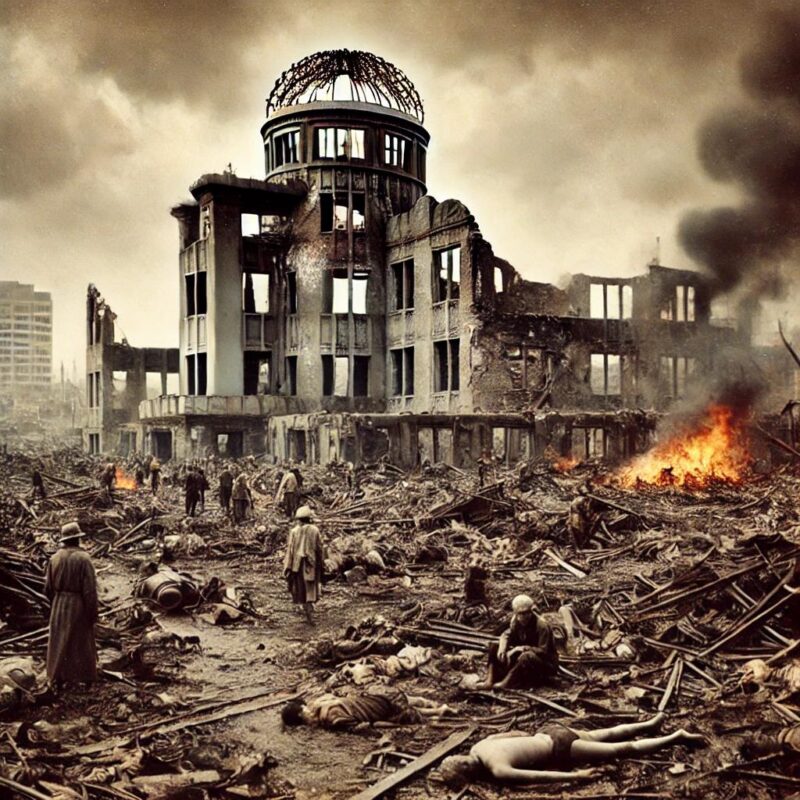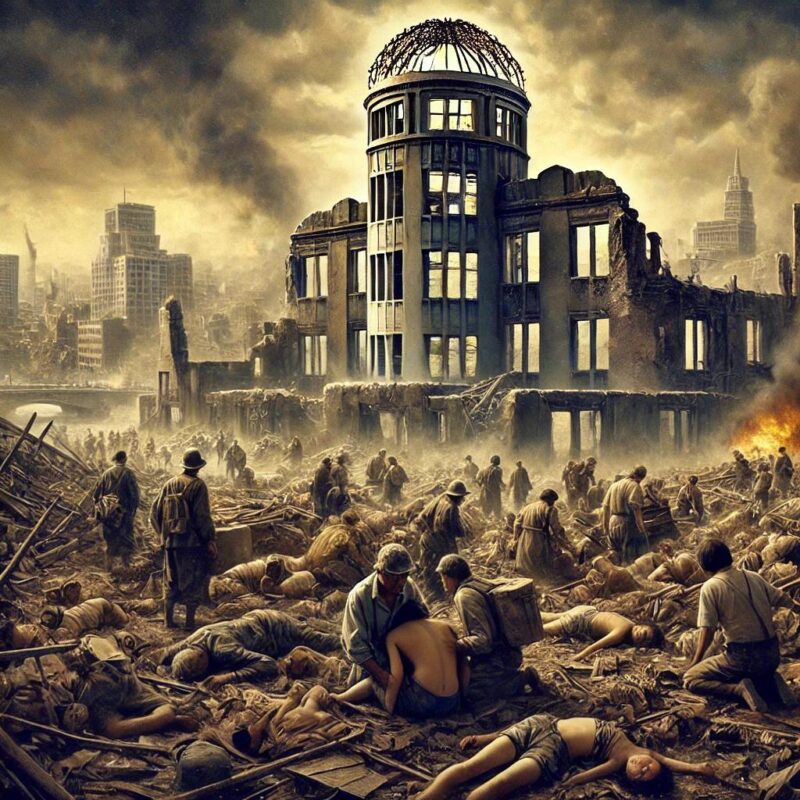The Hiroshima Atomic Blast: A Moment That Changed the World
On August 6, 1945, the world witnessed one of the most devastating moments in human history—the dropping of an atomic bomb on Hiroshima, Japan. This single event not only ended World War II but also introduced the world to the immense power and destruction of nuclear weapons. Understanding the Hiroshima bombing requires us to look at the reasons behind it, the immediate impact, and the long-term effects it had on Japan and the world.
The Path to Hiroshima
Before diving into the events of that fateful day, it’s important to understand the background. World War II had been raging for six years, with countries across Europe and the Pacific locked in brutal conflicts. The United States had been at war with Japan since the attack on Pearl Harbor in 1941. Despite significant losses, Japan refused to surrender. As a result, the U.S. sought a way to force Japan’s surrender without engaging in a prolonged and bloody invasion.
The answer came in the form of a new and terrifying weapon—the atomic bomb. Developed through the secretive Manhattan Project, the atomic bomb was a groundbreaking scientific achievement. The U.S. had tested the first bomb successfully in July 1945, and soon after, President Harry Truman approved its use against Japan. The goal was to bring a swift end to the war and minimize further American and Allied casualties.

The Bombing of Hiroshima
On the morning of August 6, 1945, an American B-29 bomber named Enola Gay took off from Tinian Island, carrying the atomic bomb known as “Little Boy.” At 8:15 AM, the bomb was dropped over Hiroshima, a city with a population of approximately 350,000 people.
Within seconds, a blinding flash of light filled the sky, followed by a massive explosion. The bomb detonated about 600 meters above the ground, unleashing an intense wave of heat and energy. Buildings crumbled, fires erupted, and tens of thousands of people were instantly killed. The explosion created a firestorm that spread throughout the city, leaving destruction in its wake.
Immediate Aftermath
The impact of the atomic bomb was unimaginable. Nearly 80,000 people died instantly, and by the end of 1945, the death toll had reached around 140,000 due to injuries and radiation exposure. The survivors, known as hibakusha, faced horrific burns, injuries, and illnesses caused by radiation.

Hiroshima was almost entirely destroyed. Homes, schools, hospitals, and businesses were reduced to rubble. The intense heat vaporized people near the blast center, leaving only their shadows imprinted on walls and streets. Those who survived suffered severe burns and injuries, and hospitals, already overwhelmed, struggled to provide care.
Radiation and Long-Term Effects
One of the most devastating aspects of the Hiroshima bombing was the long-term effects of radiation. Many survivors developed radiation sickness, characterized by nausea, vomiting, hair loss, and a weakened immune system. Over time, radiation exposure led to an increase in cancer rates, especially leukemia. Children who were exposed to the radiation in the womb were born with birth defects or developmental issues.
Additionally, the psychological trauma for the survivors was immense. Many hibakusha faced social stigma and discrimination, as people feared they carried contagious diseases. The physical and emotional scars of that day remained with them for the rest of their lives.
The World’s Reaction
The Hiroshima bombing, followed by another atomic bomb dropped on Nagasaki three days later, shocked the world. On August 15, 1945, Japan officially surrendered, bringing World War II to an end. However, the bombings raised serious ethical and moral questions about the use of nuclear weapons.

Many people, including scientists involved in the Manhattan Project, expressed regret and concern over the power of the bomb. The images and stories from Hiroshima spread across the world, highlighting the horrifying consequences of nuclear war. This event led to increased efforts in nuclear disarmament and the establishment of international agreements to prevent future nuclear warfare.
Rebuilding Hiroshima
Despite the unimaginable destruction, Hiroshima did not remain in ruins forever. The city underwent remarkable reconstruction, becoming a symbol of peace and resilience. In 1949, the Japanese government designated Hiroshima as a “City of Peace,” and efforts to rebuild began.
One of the most important sites in Hiroshima today is the Hiroshima Peace Memorial Park. This area includes the remains of the Hiroshima Prefectural Industrial Promotion Hall, now known as the Atomic Bomb Dome. The park also houses the Hiroshima Peace Memorial Museum, which educates visitors about the events of August 6, 1945, and promotes a message of peace and nuclear disarmament.
The Message of Peace
Today, Hiroshima serves as a powerful reminder of the dangers of nuclear war. Every year on August 6, a memorial ceremony is held in the city to remember the victims and advocate for global peace. The Peace Memorial Park and Museum attract visitors from around the world, including world leaders who come to pay their respects and reflect on the importance of nuclear disarmament.
The survivors, the hibakusha, have dedicated their lives to sharing their experiences and educating future generations. Their message is clear: nuclear weapons should never be used again. The horrors of Hiroshima must serve as a lesson to humanity about the importance of peace, diplomacy, and cooperation among nations.

Conclusion
The Hiroshima atomic blast was one of the most devastating moments in history, but it also sparked important discussions about war, peace, and the power of science. While the immediate impact was catastrophic, the long-term effects continue to shape global policies and attitudes toward nuclear weapons.
Hiroshima’s story is one of tragedy, resilience, and hope. From the ashes of destruction, the city emerged as a beacon of peace, reminding the world of the consequences of war and the importance of striving for a future without nuclear conflict. By learning from history, we can work towards a world where such destruction never happens again.
Questions & Answers
What event took place in Hiroshima on August 6, 1945?
An atomic bomb, known as “Little Boy,” detonated over Hiroshima, causing massive destruction and loss of life.
What was the purpose of dropping the atomic bomb on Hiroshima?
The goal was to force Japan’s surrender in World War II and prevent further casualties in a prolonged war.
How much destruction did the Hiroshima bomb cause?
The explosion flattened much of the city, instantly killing tens of thousands of people and causing widespread fires and structural damage.
What health effects did survivors experience?
Many developed radiation sickness, suffered severe burns, and later faced higher risks of cancer and other illnesses.
How did Hiroshima rebuild after the bombing?
Reconstruction efforts transformed the city into a symbol of peace, with the creation of Hiroshima Peace Memorial Park and Museum.
Why is Hiroshima significant today?
Hiroshima stands as a reminder of the horrors of nuclear war and continues to promote messages of peace and disarmament.
